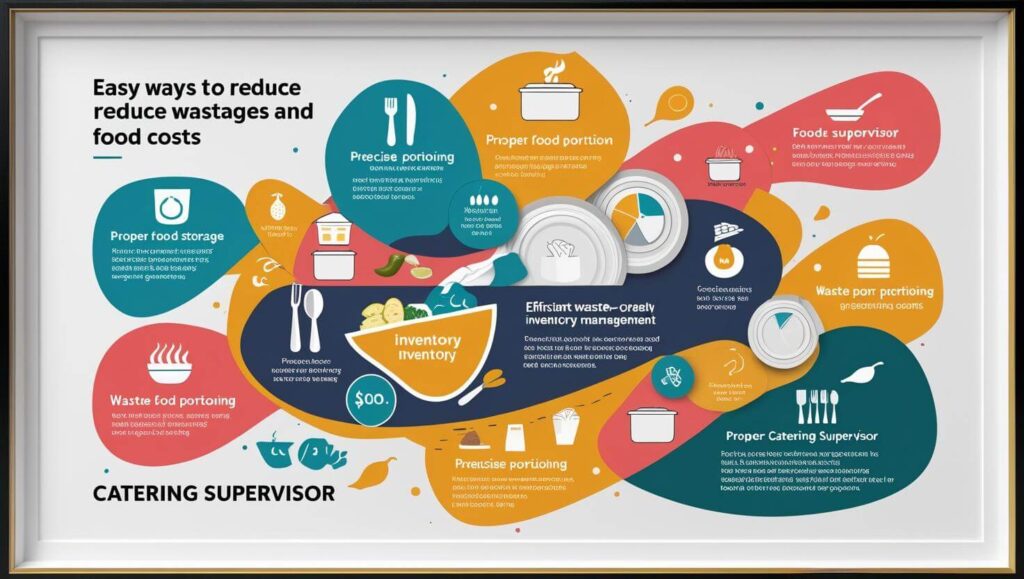Reduce Food Waste Catering Supervisor’s Guide: 10 Practical Ways to Save Money

IIntroduction
Welcome to the Reduce Food Waste Catering Supervisor’s Guide. Food waste is a significant challenge in catering, impacting both the environment and your budget. This guide provides catering supervisors with practical, actionable tips to reduce food waste effectively, save money, and run greener events.
1. Accurate Guest Count and Menu Planning
A crucial step in the Reduce Food Waste Catering Supervisor’s Guide is planning. By obtaining an accurate guest count and designing menus that use overlapping ingredients, you can minimise surplus food. Proper planning ensures that you prepare just enough for the event, reducing waste and cost.
2. Portion Control Is Key
The Reduce Food Waste Catering Supervisor’s Guide highlights portion control as essential. Training your staff to serve consistent portions helps avoid oversized servings that often end up as waste. Smaller portions encourage guests to take what they need and return for seconds if desired.
3. Smart Inventory Management
Inventory management is a pillar of the Reduce Food Waste Catering Supervisor’s Guide. Using a First-In, First-Out (FIFO) system and regularly auditing stock ensures older ingredients are used first, preventing spoilage and unnecessary waste.
4. Proper Food Storage Practices
Good storage habits are vital in this Reduce Food Waste Catering Supervisor’s Guide. Maintaining correct temperature and humidity, labelling products clearly, and sealing containers properly help keep ingredients fresh longer and reduce spoilage.
5. Repurpose Leftovers Creatively
An innovative tip from the Reduce Food Waste Catering Supervisor’s Guide is to repurpose leftovers. Vegetable scraps can be made into stocks, stale bread into croutons — turning potential waste into delicious new dishes adds value and reduces bins.
6. Train and Engage Your Team
Successful implementation of the Reduce Food Waste Catering Supervisor’s Guide depends on your team. Train your staff on waste reduction techniques, portion control, and waste tracking. Engaged employees contribute significantly to reducing food waste.
7. Use Technology and Waste Tracking Tools
The Reduce Food Waste Catering Supervisor’s Guide recommends using digital tools to monitor waste. Tracking discarded food patterns helps identify problem areas, enabling you to make data-driven decisions to further reduce waste.
8. Partner with Local Food Banks
When possible, the Reduce Food Waste Catering Supervisor’s Guide suggests donating safe, surplus food to local food banks or charities. This supports the community while preventing unnecessary waste.
9. Regular Waste Audits
Regular audits are part of the Reduce Food Waste Catering Supervisor’s Guide approach. Analysing your waste weekly or monthly reveals patterns and helps you adjust purchasing and preparation accordingly.
10. Communicate Sustainability Efforts to Clients
Finally, the Reduce Food Waste Catering Supervisor’s Guide encourages you to share your commitment to reducing food waste with clients. Demonstrating sustainability practices can give you a competitive advantage in the catering industry.
Conclusion
This Reduce Food Waste Catering Supervisor’s Guide equips you with practical steps to cut food waste and save money. By following these tips, you’ll run more efficient, cost-effective, and environmentally friendly catering operations. Start implementing these strategies today for lasting results.
